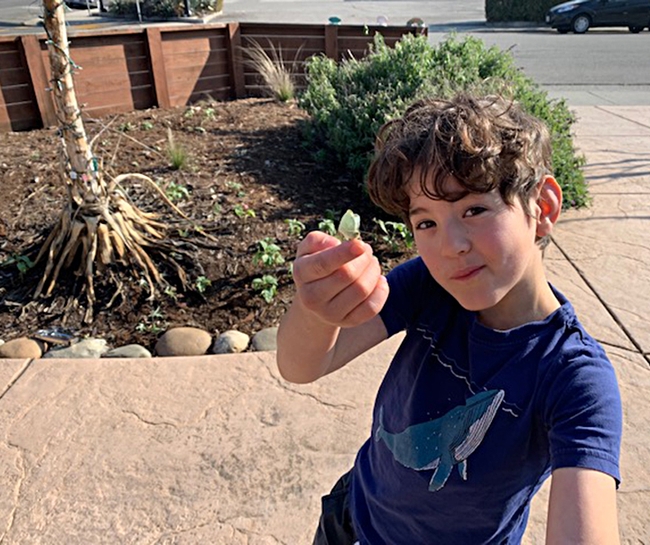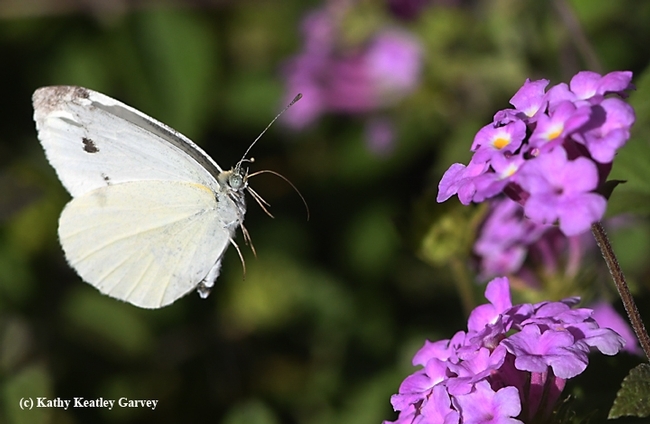- Author: Kathy Keatley Garvey
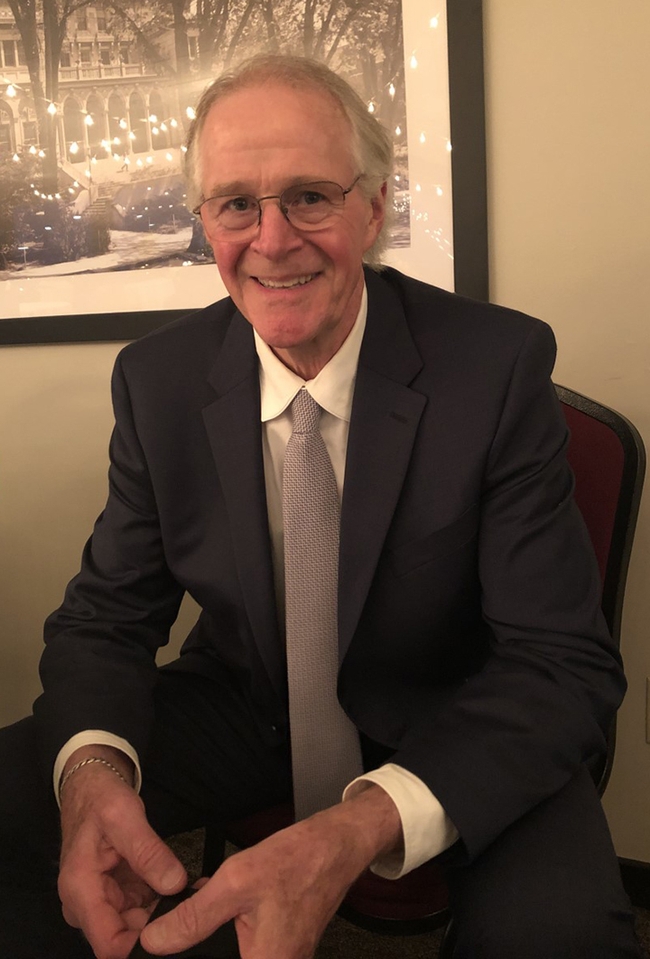
It's well deserved!
Scott, a UC Davis distinguished professor who officially retired in 2015, is internationally known for his work on the ecology and epidemiology of dengue, a mosquito-borne viral infection transmitted mainly by Aedes aegypti. He now resides in Luck, Wis., where his wife's family is from.
Only 1 percent of researchers make the global list of Highly Recited Researchers, as announced by Clarivate. The Web of Science Group, the information and technology provider for the global scientific research community, annually honors the 1 percent of scientists whose publications are the most cited in scientific papers.
"Of the world's scientists and social scientists, Highly Cited Researchers truly are one in 1,000," according to the Web of Science website.
Scott is one of 14 researchers from UC Davis--and one of some 6660 worldwide--to achieve the 2021 honor.
Scott's 19 publications listed in the report have been cited a total of 402 times. His most cited publication: “The Current and Future Global Distribution and Population at Risk of Dengue,” published in Nature Microbiology in 2019.
“Being a Highly Cited Researcher means a lot to me because it's an objective measure of the extent to which the scientific community finds helpful the work that my colleagues and I did,” said Scott, who joined the UC Davis Department of Entomology (now the Department of Entomology and Nematology) in 1996. “ I was privileged to work with exceptionally smart, hard-working, and insightful people. We had a lot of fun, but we also took our science seriously. We challenged each other in constructive and collegial ways. We are proud of the results of our efforts.”

Healthy Cites, Healthy People. Scott co-chairs a Lancet Commission that focuses on how prevention of viruses transmitted by Aedes mosquitoes fits into the growing Healthy Cities, Healthy People movement. Lancet Commissions are tasked with identifying the most pressing issues in science, medicine, and global health, with the aim of providing recommendations that change health policy or improve practice. “In this case, we are making the case for Cities without Aedes,” Scott said. "We aim to reduce the burden and threat from Aedes transmitted viruses through improved construction and management of modern urban environments that build Aedes mosquitoes out of cities and towns.”
Scott is a collaborator in a clinical trial designed to demonstrate and quantify the protective efficacy of a spatial repellent to reduce human mosquito transmitted virus infection in Sri Lanka. “This new project,” he said, “builds on a randomized controlled clinical trial that my colleagues I recently completed in Iquitos, Peru, which revealed a significant protective efficacy of a spatial repellent against human infection. Publication of those results a currently under review.”
“In addition to the clinical trial, my colleagues and I are publishing a series of papers from Iquitos that examine the role of people with in-apparent and mild infections in virus transmission. By accounting for factors underlying variation in each person's contribution to transmission we will be able to better determine the type and extent of effort needed to prevent disease.”
Scott's other activities include being a scientific advisor for a clinical trial in Brazil that is testing the public health benefit of Wolbachia for prevention of viruses transmitted by Aedes mosquitoes. “The study will assess the efficacy of releasing Wolbachia-infected Aedes aegypti into the environment in reducing human virus infection compared to standard vector control measures alone,” he said.
Scott serves on three World Health Organization committees, “which I find particularly rewarding because of their potential to improve public health policy and thus global health.”
Among his other activities:
- Chair of a group that is writing a chapter on Dengue Vector Control Guidelines that will be included in the updated version of WHO guidelines for dengue diagnosis, treatment, prevention, and control.
- Co-chair of the Wolbachia Evidence Review Group. “Mosquitoes infected with the endosymbionic bacteria Wolbachia are designed to have reduced capacity to become infected with and transmit a variety of viruses, which is expected to reduce human disease,” Scott explains. “Results from our deliberations will help the World Health Organization to develop guidelines for member States on the application of this exciting new intervention strategy.”
- Member of the World Health Organization Technical Advisory Group on the Global Integrated Arboviruses Initiative. The Arbovirus Initiative focuses on strengthening the coordination, communication, capacity building,research, preparedness, and response needed to mitigate the growing risk of epidemics due to arthropod transmitted viral diseases. Scott describes it as “a collaborative effort between the World Health Emergency Program, the Department of Control of Neglected Tropical Diseases, and the Immunization, Vaccines, and Biological Department at WHO. Members of the Technical Advisory Group have a broad range of expertise (clinical management, diagnostics, epidemiology, vector control, virology, vaccines, and travel medicine) and serve in an advisory capacity to WHO with a focus on essential and strategic guidance on management of disease. Our current focus is finalizing the Global Integrated Arboviruses Initiative, which will be presented to the World Health Assembly for review and approval.”
Challenging and Rewarding. “I am excited about and enjoy all these activities,” the medical entomologist commented. “They are challenging and rewarding extensions of the work I have done for that past 40 years.”
Scott, who holds bachelor and master's degrees from Bowling Green (Ohio) State University, received his doctorate in ecology in 1981 from Pennsylvania State University and did postdoctoral research in epidemiology at Yale University School of Medicine's Arbovirus Research Unit, part of the Department of Epidemiology and Public Health. He served on the faculty of the Department of Entomology, University of Maryland, from 1983 to 1996 before joining the UC Davis entomology faculty as a professor of entomology and director of the Vector-Borne Disease Laboratory. He was acting director of the UC Davis Center for Vector-Borne Research from 1996 to 1999, and director of the UC Davis Arbovirus Research Unit (2001-2003). He was selected vice chair of the Department of Entomology in 2006, serving until 2008.
Highly honored by his peers, Scott won the coveted Harry Hoogstraal Medal from the American Society of Tropical Medicine and Hygiene in 2018. His other honors include fellow of three organizations: American Society of Tropical Medicine and Hygiene (2014), Entomological Society of America (2010), and the American Association for the Advancement of Science (2008). He was named a UC Davis distinguished professor in 2014. In 2015, he won the Charles W. Woodworth Award, the highest honor awarded by the Pacific Branch of the Entomological Society of America.
The methodology that determines the “who's who” of influential researchers draws on the data and analysis performed by bibliometric experts and data scientists at the Institute for Scientific Information at Clarivate. It also uses the tallies to identify the countries and research institutions where these citation elite are based.
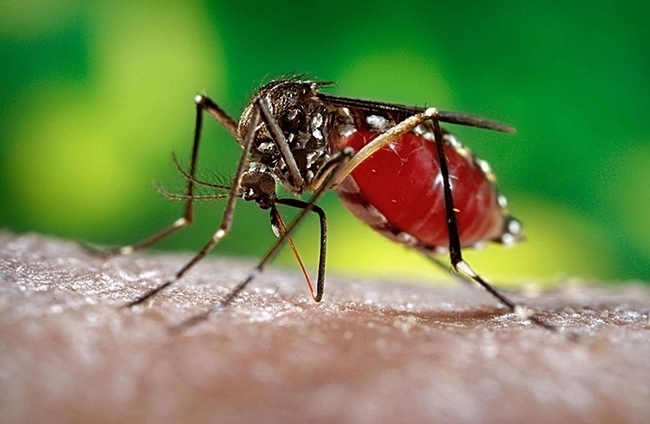
- Author: Kathy Keatley Garvey
California's almond pollination season typically starts in mid-February, around Valentine's Day, but along the Benicia waterfront, the almond trees sometimes blossom as early as Jan. 1.
The climate is warm and temperate. The bees are hungry, eager to leave their hives to gather pollen and nectar for their colonies. The blossoms beckon. Bees and almonds. Almonds and bees. The Almond Board of California calls it "Nature's perfect duo."
"When almonds trees bloom, bees get their first food source from our orchards' nutritious pollen," according to its website. "While bees are only with us for two months of the year as they pollinate the crop, we work to support their health for all twelve."
We stopped by Matthew Turner Shipyard Park in Benicia last Sunday morning just to see bees at work.
Nature's pastel paintings--the serenity of the pinkish-white blossoms, the soul of the blue sky, the sound of the water, and the spirit of the bees.
This is the real almond joy.
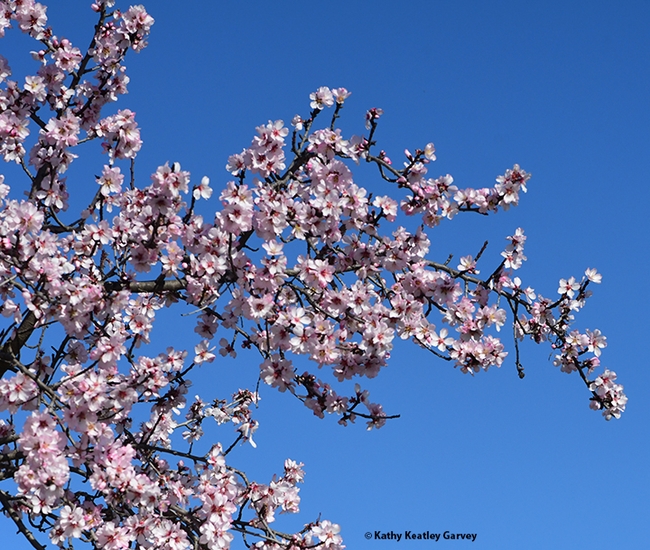
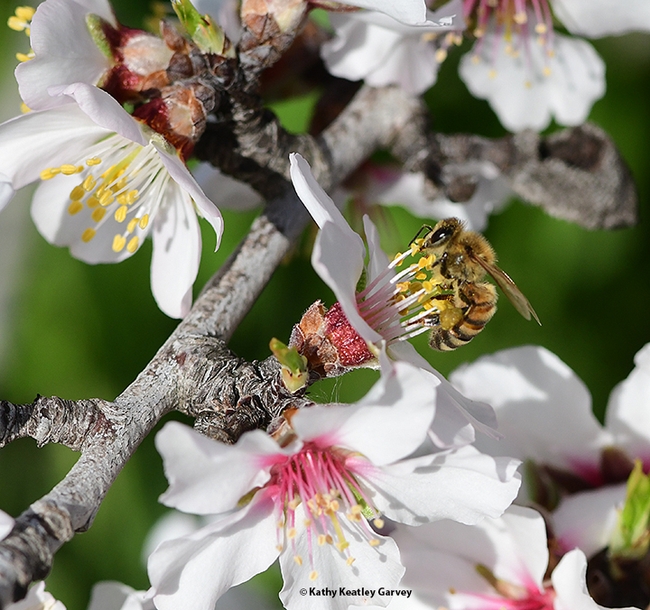
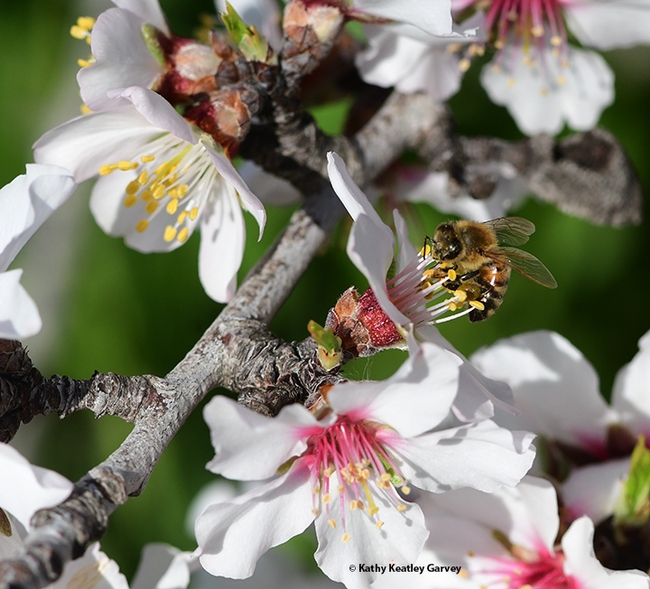
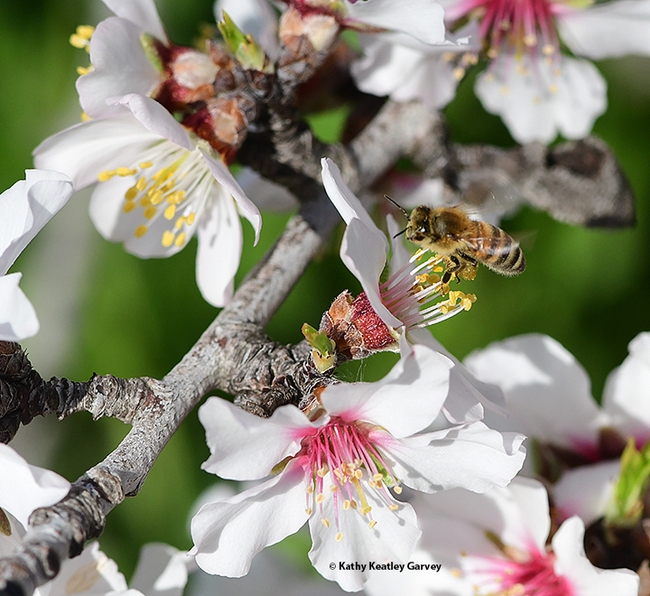
- Author: Kathy Keatley Garvey
"Scientists now understand how certain animals can feed on picturesque, orange monarch butterflies, which are filled from head to abdomen with milkweed plant toxins.
"In high enough concentrations, milkweed can kill a horse, or a human. To be able to eat this plant, monarchs evolved a set of unusual cellular mutations. New UC Riverside research shows the animals that prey on monarchs also evolved these same mutations.
"A Current Biology journal article, published Nov. 22, 2021, describes the research that revealed these mutations in four types of monarch predators — a bird, a mouse, a parasitic wasp, and a worm." --EurekAlert.
The leading author of that research article, evolutionary biologist Simon "Niels" Groen, an assistant professor at UC Riverside, will discuss "Plant Toxins and the Evolution of Host-Parasite Interactions" when he presents a seminar to the UC Davis Department of Entomology and Nematology at 4:10 p.m., Wednesday, Feb. 2 in 122 Briggs Hall.
He will speak in person. The lecture also will be broadcast simultaneously on Zoom. The Zoom link: https://ucdavis.zoom.us/j/99515291076.
"Plants interact with incredibly diverse groups of animals including plant-feeding insects and nematodes as well as their natural enemies," Groen says in this abstract. "These interactions are influenced by toxic defensive chemicals that plants make. In my talk, I will focus on how plants evolved variation in production of these defensive chemicals and how animal parasites in turn evolved mechanisms enabling them to handle such toxins."
Groen, who joined the UC Riverside faculty in July 2021 following his postdoctoral research position (2014 to 2021) in the Noah Whiteman laboratory, Department of Ecology and Evolutionary Biology, University of Arizona, focuses his research on "understanding molecular mechanisms of adaptation in the context of species interactions and fluctuating environmental conditions."
A native of the Netherlands, he received his bachelor's degree and masters degree in biology from Wageningen University, Netherlands, and his doctorate in plant sciences from the University of Cambridge, UK.
Groen served as a visiting researcher from 2007 to 2008 in the Department of Multi-Trophic Interactions, Netherlands Institute of Ecology, and as a visiting researcher from 2008 to 2012 in the Department of Organismic and Evolutionary Biology, Harvard University.
"Growing up in The Netherlands, I became fascinated with plants and their responses to ever-changing environmental conditions while working as a 'ziekzoeker' in tulip fields outside of school hours," he writes in an author profile on the American Society of Plant Biologists website. The site featured him as the first author of “Evolutionary Systems Biology Reveals Patterns of Rice Adaptation to Drought-Prone Agro-Ecosystems," published Nov. 15, 2021 in the journal Plant Cell.
"A 'ziekzoeker' looks for diseased plants and I searched in particular for variegated white and red tulips--the ones you'd recognize from a golden-age Dutch still life painting," Groen related. "I learned how these tulips are infected with an aphid-transmitted virus and during my PhD in the group of John Carr at the University of Cambridge, I would further investigate the molecular mechanisms of how virus infections would change plant interactions with aphids and pollinators. I was gripped by the role that plant defensive chemicals play in shaping species interactions and I continued to study these as a postdoc with Noah Whiteman at the University of Arizona and the University of California, Berkeley.'
On the author page, he chronicled his previous work on the interactions between milkweeds and the monarch butterfly "and found out how the monarch evolved resistance to the cardenolide toxins that milkweeds make. While this work mostly revolved around a single gene of large effect, typically several or many genes are involved in organisms' evolutionary responses. As a Gordon and Betty Moore Foundation fellow in the group of Michael Purugganan at New York University, I learned about the latest developments in evolutionary genomics and systems biology while investigating patterns of natural selection on gene expression in rice populations that we grew under wet and dry field conditions with our collaborators at the International Rice Research Institute in The Philippines."
"The current paper (Plant Cell) is a culmination of this research," Groen related. "We found that under field drought rice plants do not just respond to changes in water availability, but also to concomitant changes in abundance of soil microbes that they interact with. As assistant professor in the Department of Nematology at the University of California, Riverside, I will continue to study rice and milkweed as well as plants from the nightshade family and look at the complex evolutionary tug-of-war between these plants and parasitic nematodes. Combining laboratory and field experiments, we will zoom in on the central role that plant chemicals play by using approaches from evolutionary and systems biology like the ones we describe in our paper."
Nematologist Shahid Siddique, assistant professor in the Department of Entomology and Nematology, coordinates the winter quarter seminars. He may be reached at ssiddique@ucdavis.edu for any technical issues involving the Zoom connection.
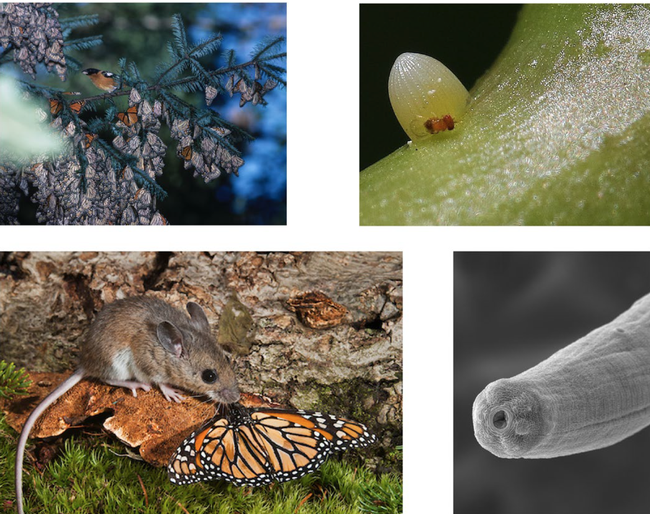
- Author: Kathy Keatley Garvey
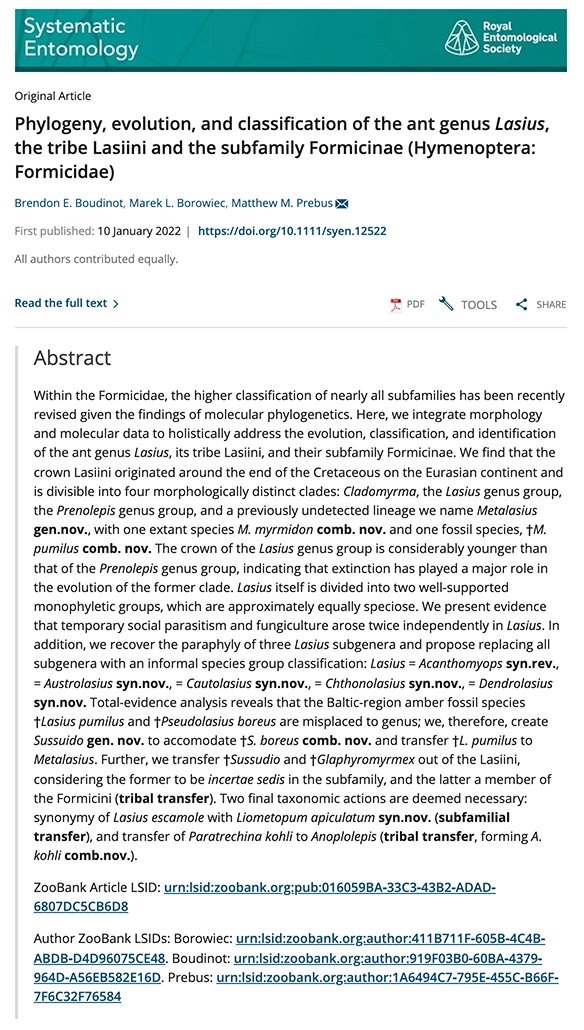
- It's one of the habitats of the California state insect, the California dogface butterfly, Zerene eurydice, and its host plant, false indigo, Amorpha californica--or at least it was before massive wildfire swept through there on Aug. 19, 2020.
- It's one of 10 research sites of butterfly guru Art Shapiro, UC Davis distinguished professor of evolution and ecology, who has monitored central California's butterfly populations since 1972 and maintains a research website at https://butterfly.ucdavis.edu/
And now, it's the home of a newly discovered ant species.
Myrmecologists Brendon Boudinot, Marek Borowiec and Matthew Prebus, all alumni of the Phil Ward laboratory, UC Davis Department of Entomology and Nematology, just published their collaborative research, "Phylogeny, Evolution, and Classification of the Ant Genus Lasius, the Tribe Lasiini and the Subfamily Formicinae (Hymenoptera: Formicidae)," in the journal Systemic Entomology.
The ant world on Twitter is crawling with congratulatory comments and how "awesome" the work is. Wrote one: "Congratulations! Lasius is a familiar genus in Japan, so I will let the Japanese entomologists know about it."
The story behind the story? It all began in the Ward lab. "The Three Ant Men" are now scattered from Idaho to Arizona to Germany.
- Borowiec, who received his doctorate at UC Davis in 2016, is an assistant professor at the University of Idaho.
- Prebus, who received his doctorate at UC Davis in 2018, is a postdoctoral scholar at Arizona State University.
- Boudinot, who received his doctorate at UC Davis in 2020, is in Jena, Germany on a two-year Alexander von Humboldt Research Fellowship to research evolutionary and comparative anatomy.
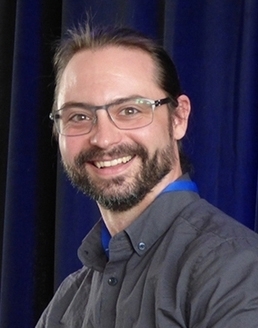
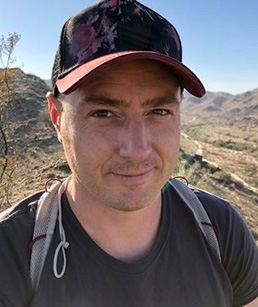
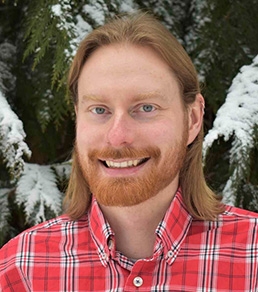
Looking back, Prebus and Borowiec said that they were both interested in Lasius atopus "due to its strange morphology and lack of phylogenetic data despite the amount of attention paid to the genus, and planned a collecting trip to the type locality in Mendocino County in 2013."
The collecting trip to Mendocino proved unsuccessful. "But because of Phil's extensive collections. we knew of a population of a closely related species in Gates Canyon near the city of Vacaville," Prebus said. This time the trio collected specimens from several colonies at Gates Canyon, which is located off Pleasants Valley Road.
"For all of us, this was a collaborative side project, so after the study was presented, submitted, and rejected, it took the back-burner while people finished their dissertations, got jobs, got married, had kids, and so on," Prebus recalled. "Speaking personally, the pandemic put quite a few of my postdoc projects on hold after the Arizona State University campus closed, but the small upside amongst the inundation of downsides was that I was able to focus on getting some long-haul projects into shape for publication, including the Lasius study. This involved a huge amount of reanalysis of data that we had already collected, but thankfully didn't require generating any new data."
See more on the ant research on the UC Davis Department of Entomology and Nematology website.
(Note that the 7.8 mile Gates Canyon Road, lined with residential homes (private property) and "no trespassing" signs, is a paved county road that leads to the top of Mount Summit, the highest point in Vacaville. It is narrow and hilly. Hikers, runners, walkers and bicylists consider it a challenge.)
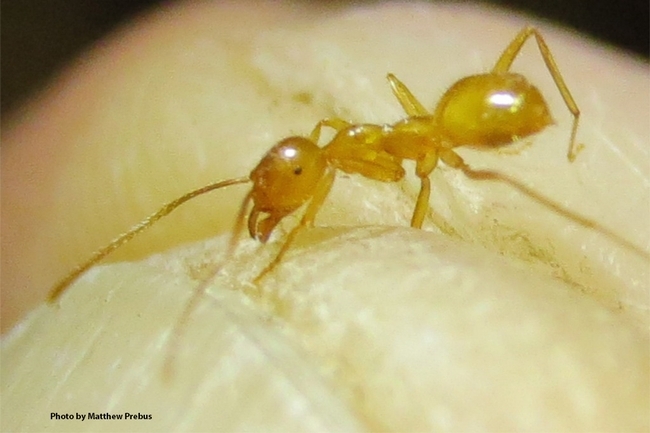
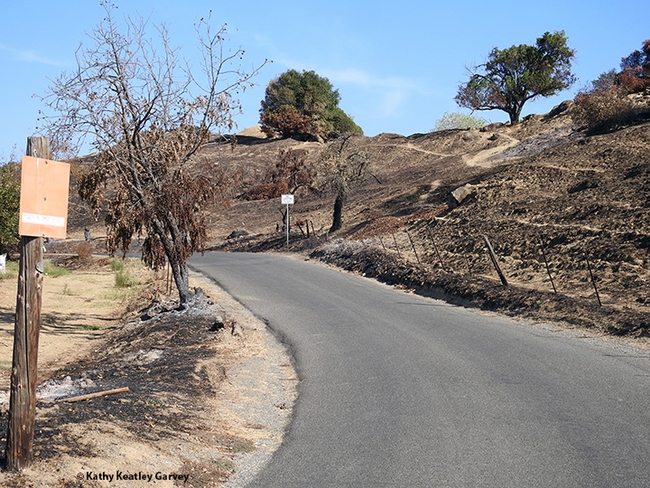
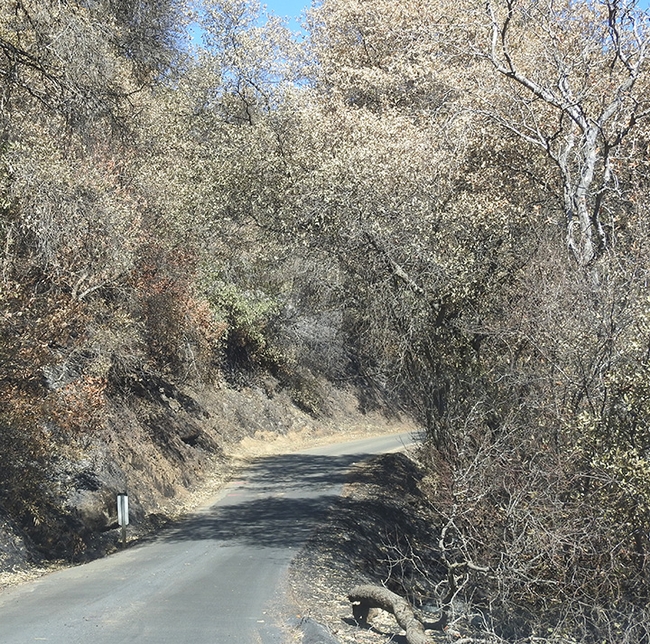
- Author: Kathy Keatley Garvey
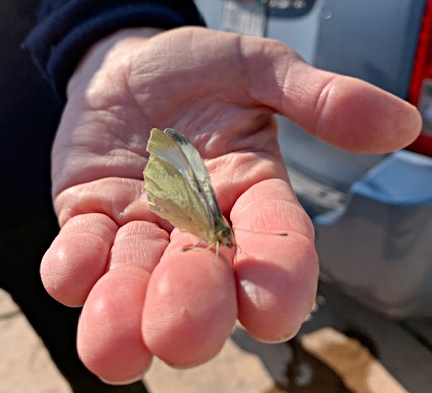
Asher Schneider, a budding entomologist who attends Eliza Sater's second-third grade class at Birch Lane Montessori, Davis, found a cabbage white butterfly, Pieris rapae, at 10:54 a.m., Sunday, Jan. 23 on M Street, Davis.
Asher, the son of Rachel White and Ben Crago-Schneider, spotted the butterfly on salvia (sage). "Sadly this guy looked like he didn't have much time left," White said. "He was just kind of flopping around on the sage."
The family remembered reading about the annual contest in The Davis Enterprise, and emailed a photo to Shapiro.
Shapiro, clearly delighted in the youth's participation in what would have been the 50th annual contest (canceled the last two years due to the COVID pandemic precautions) promptly named him "runner-up."
The first of 2022? Shapiro recorded a P. rapae in West Sacramento at 1:25 p.m. on Wednesday, Jan. 19.
"Pop goes the Pieris!" Shapiro emailed to his colleagues and friends.
Jan. 19 was the day that his colleague-collaborator Matt Forister, the Trevor McMinn Endowed Professor in Biology, Foundation Professor, at the University of Nevada, calculated it would be sighted. Forister, who received his doctorate in ecology (2004) from UC Davis, studying with Shapiro, creates "The First Flight Date" graphs. "And.... as if we had coordinated efforts (which we didn't), here's the graph!" Forister wrote in an email. "Art, you nailed it right on the regression line this time, you deserve an extra beer."
The contest involves collecting the first cabbage white butterfly of the year in the three-county area of Yolo, Sacramento and Solano. The traditional rules: Catch a live cabbage white butterfly in the wild in one of those three counties, deliver it live to Shapiro's department in Storer Hall, UC Davis (with the full data, exact time, date and location of the capture) and if it's the first of the year, the winner receives a pitcher of beer or its equivalent.
Last year Shapiro collected the first of the year in a "non-contest" at 1:55 p.m. Jan. 16 on the UC Davis campus.
Since 1972, the first flight of the cabbage white has varied from Jan. 1 to Feb. 22, averaging about Jan. 20. Shapiro says with climate warming, the species is now emerging a week or so earlier on average than it did 30 years ago here.
P. rapae inhabits vacant lots, fields and gardens where its host plants, weedy mustards, grow. The male is white. The female is often slightly buffy; the "underside of the hindwing and apex of the forewing may be distinctly yellow and normally have a gray cast,” Shapiro says. “The black dots and apical spot on the upperside tend to be faint or even to disappear really early in the season.”
Shapiro has monitored butterfly population trends on transects across central California since 1972 and maintains a research website at http://butterfly.ucdavis.
In its larval form, the cabbage white butterfly, known as "the imported cabbageworm," is a pest of cole crops. "Cabbageworm larvae chew large, irregular holes in leaves, bore into heads, and drop greenish brown fecal pellets that may contaminate the marketed product," according to the UC Statewide Integrated Pest Management Program. "Seedlings may be damaged, but most losses are due to damage to marketed parts of the plant."
